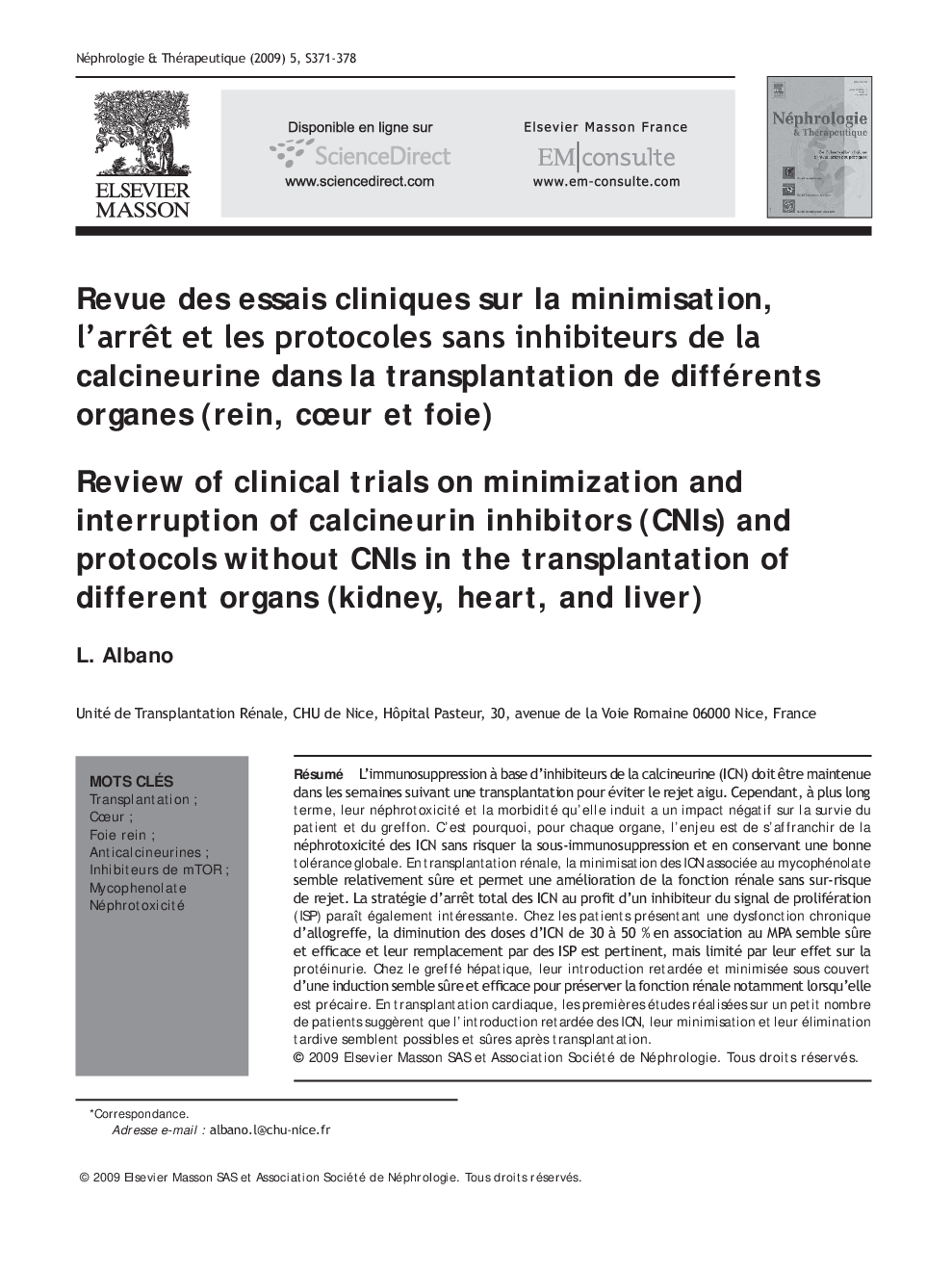| کد مقاله | کد نشریه | سال انتشار | مقاله انگلیسی | نسخه تمام متن |
|---|---|---|---|---|
| 3895520 | 1250170 | 2009 | 8 صفحه PDF | دانلود رایگان |

RésuméL’immunosuppression à base d’inhibiteurs de la calcineurine (ICN) doit être maintenue dans les semaines suivant une transplantation pour éviter le rejet aigu. Cependant, à plus long terme, leur néphrotoxicité et la morbidité qu’elle induit a un impact négatif sur la survie du patient et du greffon. C’est pourquoi, pour chaque organe, l’enjeu est de s’affranchir de la néphrotoxicité des ICN sans risquer la sous-immunosuppression et en conservant une bonne tolérance globale. En transplantation rénale, la minimisation des ICN associée au mycophénolate semble relativement sûre et permet une amélioration de la fonction rénale sans sur-risque de rejet. La stratégie d’arrêt total des ICN au profit d’un inhibiteur du signal de prolifération (ISP) paraît également intéressante. Chez les patients présentant une dysfonction chronique d’allogreffe, la diminution des doses d’ICN de 30 à 50% en association au MPA semble sûre et efficace et leur remplacement par des ISP est pertinent, mais limité par leur effet sur la protéinurie. Chez le greffé hépatique, leur introduction retardée et minimisée sous couvert d’une induction semble sûre et efficace pour préserver la fonction rénale notamment lorsqu’elle est précaire. En transplantation cardiaque, les premières études réalisées sur un petit nombre de patients suggèrent que l’introduction retardée des ICN, leur minimisation et leur élimination tardive semblent possibles et sûres après transplantation.
SummaryImmunosuppressive therapy with calcineurin inhibitors (CNI) must be continued during the weeks following transplant to avoid acute rejection. Over the long-term, however, nephrotoxicity and morbidity induced by CNIs have a negative impact on patient and transplant survival. Therefore, for any organ, it is crucial to free patients from the nephrotoxicity associated with CNIs without risking under-immunosuppression and while maintaining good overall tolerance. For kidney transplants, minimization of CNI use in association with mycophenolate seems to be relatively safe and allows for improved kidney function without an added risk of rejection. The strategy of making a complete switch from CNIs to proliferation signal inhibitors (PSI) also seems to be promising. In patients with chronic allotransplant dysfunction, reduction of CNI doses by 30 to 50% in association with MPA seems to be safe and effective and replacement of CNIs with PSIs is pertinent, though limited by their effect on proteinuria. For liver transplants, late and minimal introduction of CNIs under induction seems to be safe and effective for the preservation of kidney function, especially when precarious. For heart transplants, preliminary studies conducted on a small number of patients suggest that delayed introduction of CNIs at minimal doses and late elimination of the therapy are safe after transplant.
Journal: Néphrologie & Thérapeutique - Volume 5, Supplement 6, December 2009, Pages S371-S378